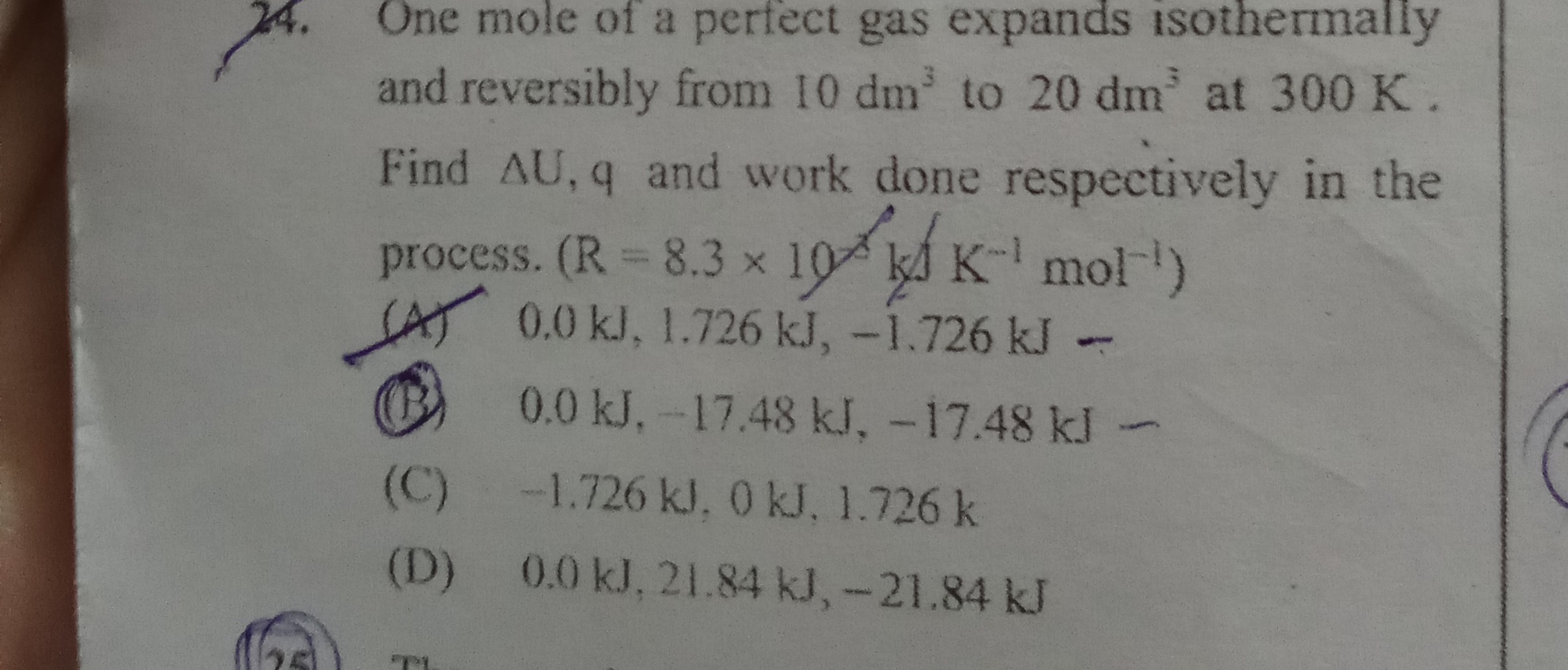Question
Question: One mole of a perfect gas expands isothermally and reversibly from 10 dm³ to 20 dm³ at 300 K. Find $...
One mole of a perfect gas expands isothermally and reversibly from 10 dm³ to 20 dm³ at 300 K. Find ΔU, q and work done respectively in the process. (R = 8.3 x 10−3 kJ K−1 mol−1)

A
0.0 kJ, 1.726 kJ, -1.726 kJ
B
0.0 kJ, -17.48 kJ, -17.48 kJ
C
-1.726 kJ, 0 kJ, 1.726 k
D
0.0 kJ, 21.84 kJ, -21.84 kJ
Answer
0.0 kJ, 1.726 kJ, -1.726 kJ
Explanation
Solution
For an isothermal process of a perfect gas,
ΔU=0 (since U depends only on T)
and from the first law,
ΔU=q+w⟹q=−w.
The work done by the gas (using the sign convention where work done by the system is negative) is given by: w=−nRTlnViVf
Substitute the values: w=−1×(8.3×10−3 kJ/K mol)×300 K×ln(1020) w=−(8.3×10−3×300×ln2) w=−(2.49×0.693)≈−1.726 kJ
Thus, q=−w≈+1.726 kJ.
Therefore:
- ΔU=0.0 kJ
- q=1.726 kJ
- w=−1.726 kJ
